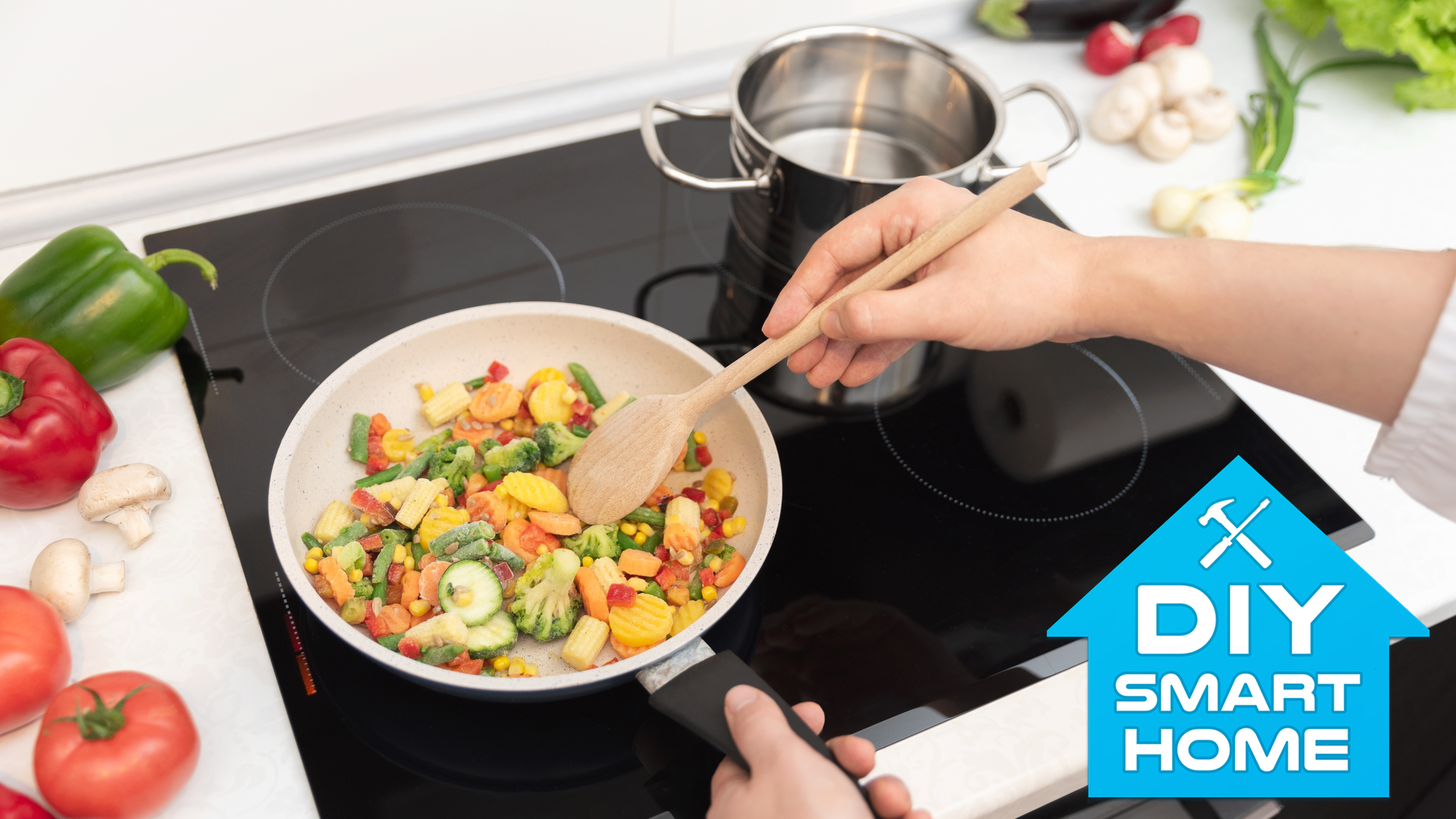Why I bought an induction stovetop — and what I wish I knew beforehand
Five things you'll want to consider before choosing an induction stovetop

This story is part of an ongoing DIY smart home series. Be sure to check out the latest installments to follow the renovation process from start to finish.
I thought I knew what I was getting myself into when I bought an induction stovetop as part of my recent kitchen renovation. But it turns out there are a couple of things I wish I understood about the magnetic appliance technology beforehand. You may also be interested in discovering what my colleague, Camilla Sharman, found out when she used an induction cooktop for the first time.
While the renovation revolved around turning the outdated space into a DIY smart home, I skipped on smart kitchen appliances with smart displays and voice assistants built-in. Still, I wanted my space to feature future-ready fixtures. That’s when I decided to purchase an energy-efficient induction stove that quickly heats up cookware using a magnetic field.
- This genius control center is the smart home gadget I’ve been waiting for
- This Alexa smart faucet is the coolest smart home device I’ve ever used
- Plus: Wear OS will need a lot more than Samsung Galaxy Watch 4 to succeed
An alternative to the best gas ranges and best electric ranges, induction stoves solve common safety and climate concerns. Not only do induction stoves turn off automatically when cookware isn’t detected, but they’re more energy efficient compared to other smooth-top electric units. And, induction ranges use electricity, rather than natural gas, which makes them better for the environment. Research shows that induction cooktops are 84% energy efficient, while gas tops are only 40% energy efficient.
These swaps used to come at much higher cost, but nowadays induction stovetops are more affordable. This 30-inch Frigidaire range fell just within our budget. But even though I’m a self-proclaimed kitchen whiz, I realized I’d needed to do some research about how to use and care for my stove before whipping up delicious dishes.
How does induction cooking work?
The flow of an alternating current (AC) creates an electromagnetic field on an induction stovetop that excites the molecules in pots and pans that aren’t good conductors, like iron or steel. When these metal molecules are excited, they heat up quickly. They also cool down quickly.
You won’t see the stovetop glow red like you might a standard electric stovetop. And when the molecular connection between cookware and the stovetop is broken, heat stops being produced.
Now, that’s how induction cooking works. Here are 5 other things I think you should know if you’re considering an induction stove for your own home.
Get instant access to breaking news, the hottest reviews, great deals and helpful tips.
1. You’ll need induction cookware — how to check whether a pot or pan will work
Perhaps the most pesky thing about an induction stovetop is that it requires particular cookware to work properly. Originally, I thought ferromagnetic cookware (stainless steel or iron) was optional. I learned the hard way it’s not when I scalded a small aluminum wok I recently bought at Costco.
With the wok in the trash can, I picked up a set of Cuisinart stainless steel cookware that clearly advertised its induction-ready. If you don’t know whether your existing cookware will work, there’s a neat trick: Hold a fridge magnet to the back of the pan. If it sticks, it’s compatible with an induction stove.
2. You might need to change your techniques
Cooking with induction takes some getting used to, especially if you’re accustomed to cooking over coils. My old stove suffered from slow and irregular heating, which my kitchen rhythms accommodated. But with induction, there’s no more turning around to chop vegetables while oil warms up. It’s ready to saute onions in seconds, meaning I’ve had to practice more mise en place.
Similarly, I’ve had to change how I handle a pan while making sauces. I used to lift and shimmy cookware over a gas flame to combine my ingredients over regular heat (whether this was necessary or my own flair, I can’t say) but this doesn’t work with induction. When you lift your pan up, the magnetic cooktop will sense its absence and cut the power. While I might not look as cool while cooking anymore, induction is definitely safer for this reason. I’ll admit, I’ve forgotten to turn off a burner before.
3. You’ll never boil water the same way
Pasta is my favorite food. Seriously, I make it multiple times per week. Which means I’ve spent more time of my life than I’d like waiting for water to boil. (Of course, I’ve found ways to fill that time, whether it’s fixing a cocktail or prepping my signature pink sauce.)
With the power setting on my new induction cooktop, my well-salted water goes from cold to bubbling in five minutes, give or take. The time saved is a game-changer. And in the case I do need to step away, or forget I have water boiling, the induction stove will turn off if it senses overflowed liquids spilling on its surface.
4. You won’t be able to char food easily
One cooking feature I wish induction cooking offered is the ability to char ingredients. On my old gas range, I could crisp up peppers or get a quick toast on a tortilla. Fajitas are a regular dinner in my household, and I’ve found myself missing certain textures I can’t achieve directly on induction.
That said, you could order an induction-compatible griddle, or use your trusty cast iron pan. In the past I’ve reserved my cast iron pans for special occasions, specifically those when I know I have the time to clean cast iron. I’m using them more frequently now, although it’d still be faster and easier to toast certain foods right on the grate.
5. You’ll need to know induction cooktop maintaince
As simple and safe as an induction stovetop makes cooking at home, you’ll need to take care of it for it to work as well for a long period of time. One thing to be mindful of with each use is to place and pick up pans gently. If the ceramic gets heavily scratched, it could dull the strength of the magnetic field.
Scratches and scuffs also attract food deposits, which can harden and also hinder the efficiency of your induction stove. This cooktop cleaner is effective for long-term care, while regular cleaning with a damp rag is also encouraged.
Be sure to check out my guides to the best smart home devices (and best cheap smart home devices) for more recommendations. Email me at kate.kozuch@futurenet.com or leave a comment below with anything you’d like to see me cover in the connected space — I might just address it in a future installment.

Kate Kozuch is the managing editor of social and video at Tom’s Guide. She writes about smartwatches, TVs, audio devices, and some cooking appliances, too. Kate appears on Fox News to talk tech trends and runs the Tom's Guide TikTok account, which you should be following if you don't already. When she’s not filming tech videos, you can find her taking up a new sport, mastering the NYT Crossword or channeling her inner celebrity chef.
